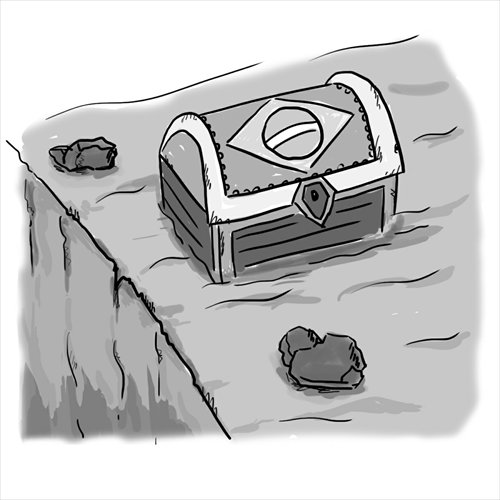HOME >> BUSINESS
Brazilian crisis stoked by pegged exchange regime
By Wang Yu Source:Global Times Published: 2014-5-6 21:43:01

Illustration: Chen Xia/GT
Since the middle of the 20th century, the Brazilian government began implementing a policy of import substitution industrialization, a trade and economic strategy that aimed to replace foreign imports with domestically made products. The government applied protective barriers to trade and foreign exchange market interventions to protect the domestic market and develop local industries. Such a policy achieved good results - from 1968 to 1974, the Brazilian economy averaged an annual growth rate of more than 10 percent.
Problems arose subsequently as the country's multiple exchange-rate regime distorted Brazil's currency and its long-term expansionary fiscal and monetary policies resulted in hyperinflation. From the 1980s into the 1990s, soaring prices seriously impacted economic growth, resulting in social turmoil. In 1993, inflation reached a staggering 2,000 percent. In July 1994, Brazil initiated the Plano Real, a set of measures intended to stabilize the economy. The plan was put into practice over three different stages.
First came a stage where Brazil balanced its fiscal revenues and expenditures while reducing its national debt. Since the Brazilian government had adopted a deficit fiscal policy, it could only resort to increasing interest rates as a way to coax investors into purchasing government bonds. But high interest rates, in turn, added to the government's debt burden.
Second came the stage of the Unidade Real de Valor (URV). This was a non-monetary reference currency created by the government to act as a parallel currency to its existing currency: the cruzeiro real. Starting in March 1994, prices were quoted both in URVs and cruzeiros reais.
The third stage saw the introduction of another currency: the Brazilian real. This new currency, which debuted in July 1994, was converted based on the URV.
The Plano Real effectively broke the hyperinflationary cycle. Inflation rates dropped from 2,477.1 percent in 1993 to a mere 1.7 percent in 1998. And in 1994, the Brazilian economy grew by 5.33 percent with a fiscal surplus of $3 billion and a current account surplus of $1.15 billion.
But starting from 1993, the US dollar entered a phase of appreciation, and Brazil's policy of pegging the real to the greenback overvalued the real by as much as 20 percent in 1995. The ramifications of this included an unfavorable balance of trade from 1996 to 1998. The country's high interest rates could not prevent the real from starting a process of gradual depreciation. Government debt and fiscal deficit accounted for 41 percent and 8 percent of GDP respectively in 1998.
Essentially, the Plano Real was intended to stabilize Brazil's currency by pegging the real to the US dollar. Through this approach, a balance of international payments could not be reached in accordance with exchange rate fluctuations. The government had to sharply increase domestic interest rates to sustain positive inflows of foreign capital.
During the time of economic tribulation, Francisco Lopez, former head of Brazil's central bank, proposed three possible choices. First, the country could continue pegging the real to the dollar and maintain foreign exchange controls. Second, it could let the real undergo "dollarization" by substituting its own currency for the greenback. Third, it could let the real "free" from the dollar. He pointed out that keeping the real pegged to the dollar would neither help Brazil in borrowing on international markets nor in repaying its external debts. The consequences of dollarization were thought to be too painful as well. Thus, the last choice prevailed and the real was unpegged.
In January 1999, the government stepped back and let the market determine the real's value, ending Brazil's fixed-exchange rate period. Officials vowed to intervene temporarily in the future if exchange rate fluctuations became too extreme.
Modern economic theory postulates that, in an open economy, a good combination of expenditure-changing and expenditure-switching policies is needed to maintain internal and external balances. In the case of the Brazilian financial crisis, monetary and exchange rate policies were needed to achieve stable prices and balanced payments. More importantly, Brazil's experience shows that such tools can be more effective when they have elasticity.
The Plano Real was designed to set the US dollar as a nominal anchor and raise interest rates to control inflation. It did effectively break the hyperinflationary cycle and bring annual inflation down into single digit territory. But substantial exchange rate appreciation couldn't be avoided and high interest rates failed to prevent capital outflows and depreciation of the real. Government debt grew worse. These developments contributed to large current account deficits, an imbalance of international payments, economic recession and finally the Brazilian financial crisis.
The author is a research fellow with the Research Bureau of the People's Bank of China. bizopinion@globaltimes.com.cn
China Business News
Posted in: Comments